
Discover the Grandeur of Honghwamun Gate
Explore the historic Honghwamun Gate, the majestic entrance to Changgyeonggung Palace, a symbol of Korea's rich royal heritage.
Honghwamun Gate, a historical landmark in Seoul, serves as the magnificent main entrance to the Changgyeonggung Palace. This iconic structure not only showcases traditional Korean architecture but also offers a glimpse into the rich history of the Joseon Dynasty, making it a must-visit for tourists seeking cultural immersion.
A brief summary to Honghwamun Gate
- 185 Changgyeonggung-ro, Jongno District, Seoul, KR
- +822-762-4868
- Visit website
- Tuesday 12 am-12 am
- Wednesday 12 am-12 am
- Thursday 12 am-12 am
- Friday 12 am-12 am
- Saturday 12 am-12 am
- Sunday 12 am-12 am
Local tips
- Visit early in the morning to avoid crowds and enjoy a peaceful experience.
- Take time to explore the gardens and other structures within Changgyeonggung Palace after visiting the gate.
- Bring a camera to capture the beautiful architecture and serene surroundings.
- Check for any cultural performances or events happening in the palace grounds during your visit.
Getting There
-
Subway
If you are near a subway station, take Line 1 (the blue line) or Line 3 (the orange line) to Jongno 3-ga Station. If you're on Line 1, exit at Jongno 3-ga and transfer to Line 3. If you’re on Line 3, stay on the train. From Jongno 3-ga Station, take Exit 15. Once you exit, walk straight for about 500 meters, passing the intersection. You will see Changgyeonggung Palace on your right. Honghwamun Gate is located at the entrance of the palace.
-
Bus
You can take bus number 101, 102, 109, or 151 to the Changgyeonggung Palace stop. Once the bus stops, get off and head toward the entrance of the palace, which is marked by Honghwamun Gate. It's a short walk from the bus stop, approximately 200 meters.
-
Walking
If you are already in the Jongno District, you can walk to Honghwamun Gate. Look for Changgyeonggung-ro street and head towards 185 Changgyeonggung-ro. The gate is the main entrance to Changgyeonggung Palace. It's easily recognizable, so keep an eye out for the traditional architecture as you approach the palace.
Discover more about Honghwamun Gate
Iconic landmarks you can’t miss
Neungseongwi Palace site
0.9 km
Explore the Neungseongwi Palace site in Seoul, a historical landmark showcasing Korea's royal heritage and stunning architecture amidst serene gardens.

Seoul City Wall Trail
1.1 km
Explore the historical Seoul City Wall Trail, where ancient fortifications meet breathtaking views, perfect for history enthusiasts and nature lovers alike.
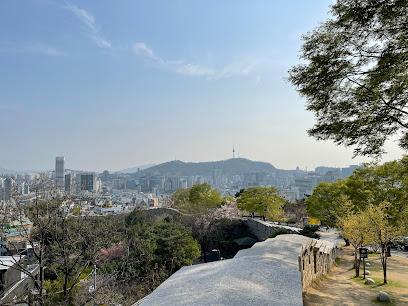
Insadong-gil
1.2 km
Discover the vibrant culture of Korea at Insadong-gil, where art, traditional tea, and delicious street food await in the heart of Seoul.

Insadong-gil Street
1.2 km
Discover the vibrant culture, art, and cuisine of Seoul at Insadong-gil Street, a must-visit destination for every traveler.

Jongno 3(sam)-ga Pocha Street
1.2 km
Discover the lively atmosphere of Jongno 3(sam)-ga Pocha Street, a cultural landmark in Seoul known for its vibrant street food scene and traditional dining.

Simsimheon (hanok)
1.2 km
Explore Simsimheon, a traditional hanok museum in Seoul's Jongno District, where Korean heritage comes to life through architecture and cultural experiences.

Hanok-gil (Insadong-gil)
1.2 km
Discover the enchanting charm of Hanok-gil, a historic street in Seoul filled with traditional architecture, art galleries, and authentic Korean cuisine.

Insadong Information Center
1.3 km
Discover the cultural essence of Seoul at the Insadong Information Center, your gateway to art, history, and local traditions.

Seoul City Wall (Hanyangdoseong Fortress)
1.3 km
Explore the historic Seoul City Wall, a UNESCO World Heritage site, offering stunning views and a deep dive into Korea's rich history.

복정우물(Bokjeong Well)
1.3 km
Uncover the historical allure of Bokjeong Well, a serene landmark in the heart of Seoul that showcases the city's rich cultural heritage.

Jogyesa Temple
1.4 km
Immerse yourself in serenity and culture at Jogyesa Temple, a vibrant Buddhist sanctuary in the heart of Seoul, South Korea.

Gongpyeong Historic Sites Museum
1.4 km
Unearth the history of Seoul at Gongpyeong Historic Sites Museum, where ancient artifacts and stories come to life in an engaging heritage experience.

Samcheong-dong Street
1.4 km
Explore the vibrant art scene, traditional architecture, and cozy cafes of Samcheong-dong Street in Seoul, a must-visit destination for tourists.

Hanwha Bulkkot-gil
1.4 km
Explore Hanwha Bulkkot-gil, a charming neighborhood in Seoul, where culture, history, and exquisite cuisine await your discovery.

Jonggak Avenue of Youth
1.4 km
Experience the vibrant energy of Jonggak Avenue of Youth, where culinary delights meet nightlife and cultural experiences in the heart of Seoul.

Unmissable attractions to see
Seoninmun
0.1 km
Discover the majestic Seoninmun, a historic gate in Seoul that embodies the city's rich cultural heritage and architectural grandeur, perfect for every tourist.

Changgyeonggung Palace
0.1 km
Discover the majestic Changgyeonggung Palace, a cultural landmark in Seoul showcasing Korea's royal heritage and stunning natural beauty.

Seoul National University Hospital Museum of Medicine
0.2 km
Explore the fascinating history of medicine at the Seoul National University Hospital Museum, where the past meets the future of healthcare.

Nakseonjae
0.3 km
Discover the rich heritage and architectural beauty of Nakseonjae, a historical landmark nestled in the serene grounds of Changdeokgung Palace.

Changdeokgung Secret Garden
0.5 km
Explore the serene beauty of Changdeokgung Secret Garden, a UNESCO World Heritage site in Seoul, where nature and history beautifully intertwine.

Daehak-ro
0.5 km
Experience the vibrant cultural scene, delectable cuisine, and artistic spirit of Daehak-ro in Jongno District, Seoul – a must-visit for every traveler.

Changdeokgung
0.5 km
Discover the exquisite beauty and rich history of Changdeokgung Palace, a UNESCO World Heritage Site in the heart of Seoul, South Korea.

Changgyeonggung Greenhouse
0.5 km
Discover the enchanting Changgyeonggung Greenhouse, a serene oasis of exotic plants nestled within Seoul's historic Changgyeonggung Palace.
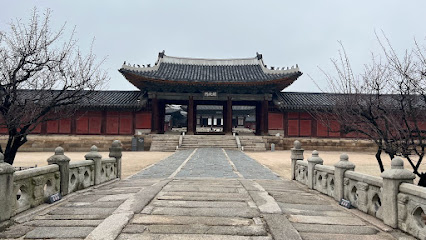
Jongmyo Shrine
0.5 km
Explore the tranquility of Jongmyo Shrine, a UNESCO World Heritage site that reflects Korea's rich royal traditions and serene beauty.

Seoul Donhwamun Traditional Theater
0.5 km
Discover the heart of Korea through mesmerizing performances at Donhwamun Traditional Theater, a cultural gem in Seoul's Jongno District.

Jaegung (Crown Hall) | Jongmyo Shrine
0.6 km
Explore Jaegung (Crown Hall), a UNESCO World Heritage site within Jongmyo Shrine, where history and tranquility intertwine in the heart of Seoul.

Donhwamun Gate
0.6 km
Explore the historical grandeur of Donhwamun Gate, the iconic entrance to Gyeongbokgung Palace, a must-see in Seoul's rich cultural tapestry.

Marronnier Park
0.6 km
Experience the beauty and tranquility of Marronnier Park, a green oasis in Seoul's vibrant Jongno District, ideal for relaxation and cultural exploration.

Seoul Museum of Korean Folk Music
0.6 km
Explore Korea's rich musical heritage at the Seoul Museum of Korean Folk Music, where tradition and performance come together in a unique cultural experience.
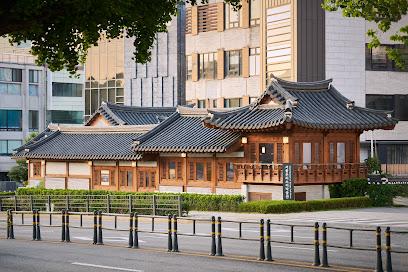
Yeongyeongdang
0.6 km
Discover the charm of Yeongyeongdang, an iconic historical landmark in Seoul's Jongno District, showcasing Korea's architectural heritage and timeless beauty.

Essential places to dine
Hanuso
1.0 km
Experience authentic Korean cuisine at Hanuso in Insadong, where tradition meets modern dining in an unforgettable culinary journey.

Korean Restaurant Doore
1.1 km
Experience the essence of traditional Korean dining at Doore - where every dish tells a story.

Sanchon
1.1 km
Discover authentic Korean vegetarian cuisine at Sanchon in Seoul's historic Insadong district—an unforgettable dining experience steeped in tradition.

Doma Insadong
1.1 km
Discover authentic Korean flavors at Doma Insadong in Seoul's historic Insadong district – a perfect blend of tradition and taste.

Ha-Yeon Korean Cuisine Restaurant
1.1 km
Savor authentic Korean traditional full-course meals at Ha-Yeon in Jongno-gu, where every dish tells a story.

Insadong gukbap
1.1 km
Experience authentic Korean gukbap at Insadong Gukbap in Seoul - where tradition meets flavor in every bowl.

Insadong Geujip
1.1 km
Experience authentic Korean flavors at Insadong Geujip - where tradition meets culinary excellence in Seoul's historic district.

Tteulag
1.2 km
Discover Tteulag: A Culinary Haven in Seoul's Insadong District Offering Authentic Korean Flavors and Warm Hospitality.

Yangbandaek
1.2 km
Experience authentic Korean flavors at Yangbandaek in Jongno District, where traditional cuisine meets warm hospitality.

PyeongYang Gogitjip
1.2 km
Experience authentic Korean BBQ at PyeongYang Gogitjip in Jongno District, where flavors meet tradition in every grilled bite.

Tteok Salon Insadong
1.2 km
Experience authentic Korean rice cakes at Tteok Salon Insadong - a culinary gem in Seoul's historic Insadong district.

Korean Folk Village
1.2 km
Discover Korea's rich heritage at Korean Folk Village – an open-air museum showcasing traditional life with performances, crafts, and delicious cuisine.
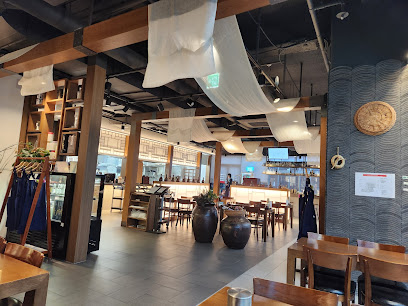
The Restaurant
1.4 km
Experience the perfect fusion of Haute French and Italian cuisine at The Restaurant in Seoul's Jongno District.

Dugahun
1.4 km
Experience authentic Italian flavors at Dugahun in Jongno District, Seoul – where culinary excellence meets vibrant atmosphere.

The Griffin Bar, Jongno-gu
1.5 km
Experience unparalleled views and exquisite cocktails at The Griffin Bar in Jongno-gu, where luxury meets the vibrant spirit of Seoul.

Markets, malls and hidden boutiques
Object
1.0 km
Explore a charming souvenir store in Jongno District, Seoul, offering unique gifts and local crafts that reflect Korea's rich culture and heritage.

Insadong Bells and Wind Chimes Shop
1.1 km
Explore the enchanting Insadong Bells and Wind Chimes Shop in Seoul, a treasure trove of handcrafted gifts that capture the spirit of Korean culture.

Insadong Vintage
1.1 km
Explore the rich tapestry of fashion history at Insadong Vintage, where each unique piece brings a story from the past to your wardrobe.

Eunso
1.1 km
Discover the essence of Korean craftsmanship at Eunso, the perfect gift shop in the heart of Insadong, Seoul.

Yeon
1.1 km
Discover Yeon, a charming gift shop in Seoul, offering unique handmade products that reflect Korea's rich cultural heritage.

Korea Traditional Souvenir Center
1.1 km
Explore authentic Korean culture at the Korea Traditional Souvenir Center, home to unique handcrafted treasures and traditional memorabilia.

Ssamziegil
1.1 km
Explore the artistic heart of Seoul at Ssamziegil, where traditional crafts meet modern shopping in a vibrant cultural hub.

Moony Gongbang Music Box (무늬공방 도자기 오르골)
1.1 km
Discover the magic of handcrafted music boxes at Moony Gongbang in Seoul's Jongno District, where melodies and memories intertwine beautifully.

세령 (Korean HandMade Highclass Traditional Accessory)
1.1 km
Discover 세령: Your Destination for Exquisite Handmade Traditional Accessories in Seoul, Celebrating Korean Artistry and Culture.

Kukje Embroidery
1.2 km
Discover the artistry of Korean embroidery at Kukje Embroidery, a unique gift shop in the heart of Seoul's Insa-dong district.

Korean National Souvenir Center
1.2 km
Explore the Korean National Souvenir Center for unique handcrafted gifts and authentic cultural experiences in the heart of Seoul.

Damul
1.2 km
Explore Damul in Insa-dong, where traditional Korean fashion meets contemporary style in a vibrant shopping experience.

인사1길
1.2 km
Explore the charm of Korean craftsmanship at Insa1-gil, a unique home goods store in Seoul's historic Insa-dong district.

AEOL SSIGU MADANG
1.2 km
Explore vintage treasures at AEOL SSIGU MADANG in the heart of Seoul's Insa-dong, where retro fashion meets a vibrant cultural scene.

YG Place Insa Branch
1.2 km
Explore the vibrant world of K-pop at YG Place Insa Branch, Seoul's premier music store, offering exclusive merchandise and a taste of Korean music culture.

Essential bars & hidden hideouts
Ikseon bar Orb of Light Cocktail & Wine bar
0.7 km
Experience the exquisite blend of cocktails and wines at Seoul's enchanting Ikseon bar Orb of Light, a hidden gem in the heart of the city.
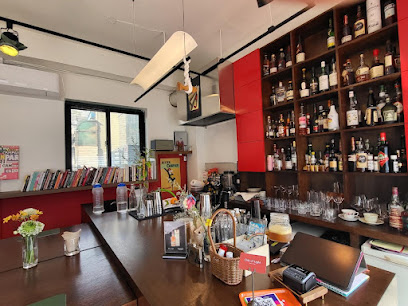
Haejeo
1.2 km
Discover Haejeo, a unique bar in Insa-dong, Seoul, where traditional culture meets modern mixology for an unforgettable experience.

Insadong Nogari
1.2 km
Experience the vibrant nightlife of Seoul at Insadong Nogari, a traditional bar offering delicious drinks and a welcoming atmosphere in the heart of Insadong.

Tou
1.3 km
Experience the authentic taste of Korea at Tou, a Korean rice wine pub in Jongno District, where culture and flavor come alive.

Seochon Dokkaebi
1.3 km
Discover Seochon Dokkaebi, a vibrant bar in Seoul that blends traditional Korean culture with modern nightlife, perfect for an unforgettable experience.

Tongkeun Imo
1.3 km
Discover the lively essence of Seoul's nightlife at Tongkeun Imo, a cozy bar in Insa-dong offering unique local drinks and a welcoming atmosphere.
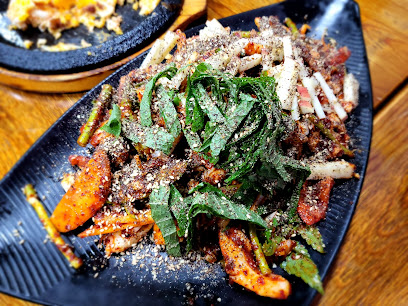
레벤호프
1.3 km
Immerse yourself in Seoul's nightlife at 레벤호프, where traditional charm meets modern mixology in the heart of Insa-dong.

Jongnoilbeonzi
1.3 km
Discover the vibrant nightlife of Jongnoilbeonzi, a perfect bar to unwind in the heart of Seoul's cultural district, Insa-dong.

Bar 420
1.3 km
Discover Bar 420 in Seoul: A cozy wine bar where exquisite flavors meet a warm atmosphere, perfect for sipping and savoring.

Ranka House Pub and Bar
1.3 km
Discover the lively ambiance and diverse drink selection at Ranka House Pub and Bar in the heart of Seoul's Jongno District.

마당쇠호프
1.3 km
Discover the local charm of Seoul at 마당쇠호프, a popular bar in Insa-dong offering delicious drinks and a vibrant social atmosphere.

OB's Cabin
1.4 km
Experience the vibrant nightlife of Seoul at OB's Cabin, a live music bar where local talent shines in an intimate setting.

The Flair Bar
1.4 km
Discover The Flair Bar in Seoul - a lively nightlife destination offering innovative cocktails, a vibrant atmosphere, and a taste of local culture.

I Love Pub
1.8 km
Experience the vibrant nightlife at I Love Pub in Jung-gu, Seoul, where friendly service meets a lively atmosphere and delicious drinks.

Ghiwon22
1.8 km
Discover Ghiwon22: A chic cocktail bar in Myeong-dong, blending local Korean flavors with innovative drinks in a vibrant atmosphere.




